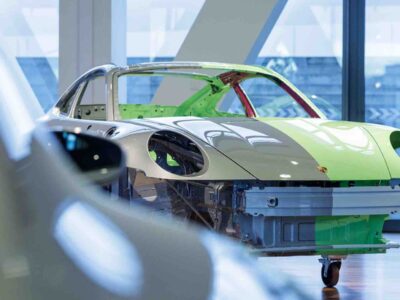DETROIT (Reuters) – Mercedes-Benz CEO Ola Kaellenius told Reuters the automaker’s newest electric vehicle architecture, launching with the CLA compact electric sedan late next year, will target 30% to 35% more driving range for each kilowatt-hour of energy stored in the battery than the brand’s current EVs.
Mercedes will also offer a lithium-iron-phosphate, or LFP, battery in the new CLA model lineup due to hit showrooms in early 2025, a first for any Mercedes EV, the CEO said in an interview.
With an LFP battery pack, Mercedes could offer a lower-priced model in a competitive segment currently dominated by Tesla. In China, the new CLA will also face competition from Chinese EV brands that use LFP batteries.
Mercedes will preview the future electric CLA with a prototype to be unveiled at the IAA auto show in Munich, Germany on Sunday.
The CLA prototype is a physical demonstration of Mercedes’ strategy for closing the technology gap with Tesla and other new EV manufacturers.
Getting more driving range using less energy from the battery is the key target for the German automaker’s future EV development, Kaellenius said.
“Efficiency is really the new currency when we go into electric vehicles,” he said.
The new CLA is targeting power use of 12 kWh per 100 kilometers, and 750 km of driving range, Kaellenius said. That compares to the 17 to 18 kWh per 100 km in a EQA 350 compact SUV model Mercedes offers today.
A current Tesla Model 3 is rated at 13.1 kWh per 100 km.
At these levels of efficiency, the future CLA should be the electric equivalent of a car that consumes one litre of gasoline per 100 km of driving, Kaellenius said. The so-called one-litre car has long been an aspirational target for European automakers. Volkswagen’s XL1 car achieved that benchmark, with a diesel-electric powertrain. VW sold only 200 of them.
Driving range remains a critical competitive benchmark in the EV market. Consumers can easily compare how far an EV can drive between charging stops.
For manufacturers, the real competition is designing vehicles that can deliver more driving range with a smaller, less costly battery pack. Reducing battery costs is critical as Tesla and other EV brands have launched a price war to sustain sales growth in China, Europe and the United States.
“When you talk about the efficiency of an electric car, you optimize the whole system,” Kaellenius said.
Mercedes has the added challenge of offsetting the power consumption of the high-powered Nvidia chips that will be used to control driver assistance, large infotainment screens and other systems in the CLA and future EVs, he said.
Mercedes engineers have been testing ways to improve EV efficiency using long road trips in a prototype vehicle called the Vision EQXX. That vehicle has pushed power consumption down as far as 8.3 kWh per 100 km, Mercedes has said.
For the Vision EQXX, “we gave the engineers no limits,” Kaellenius said.
The production of CLA will have limits set by customers and the prices rivals are charging in an increasingly crowded EV market.
(Reporting By Joe White; Editing by Susan Fenton)





